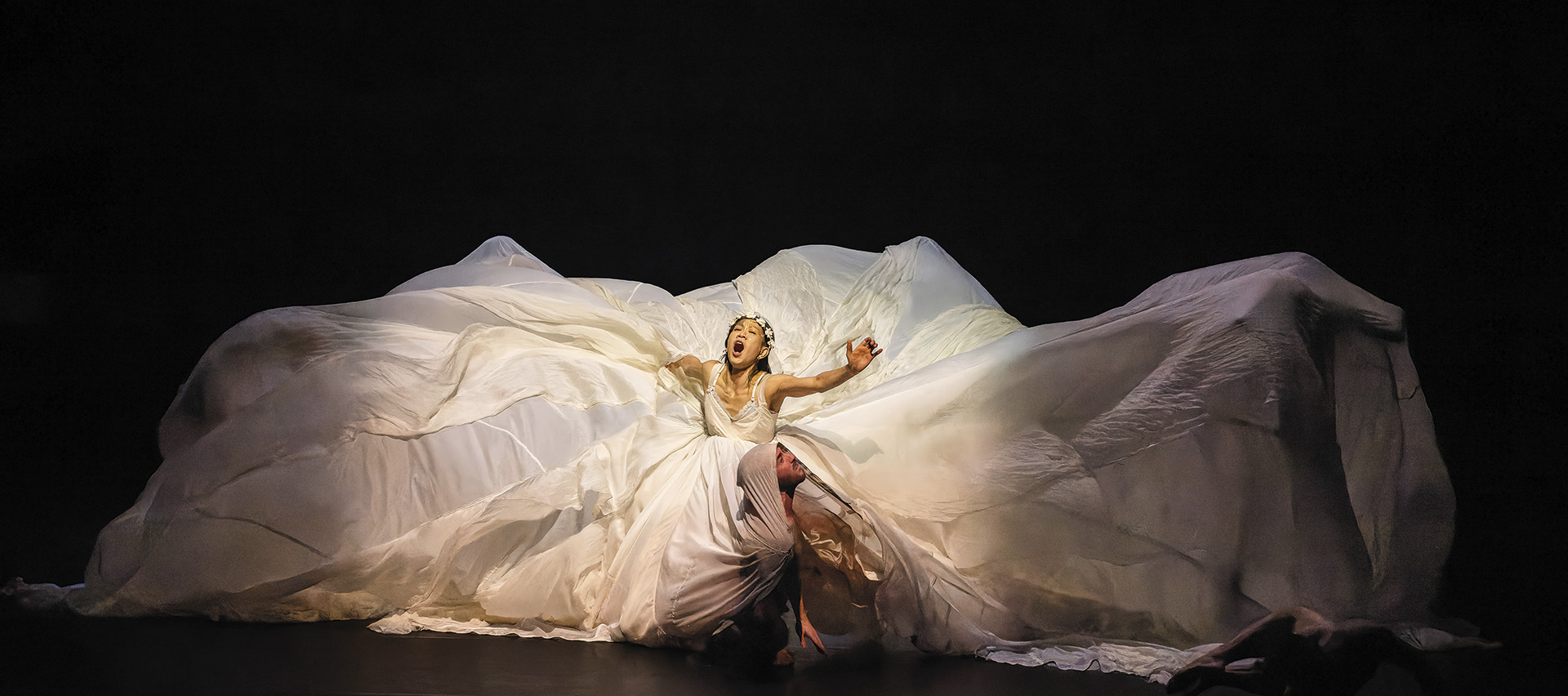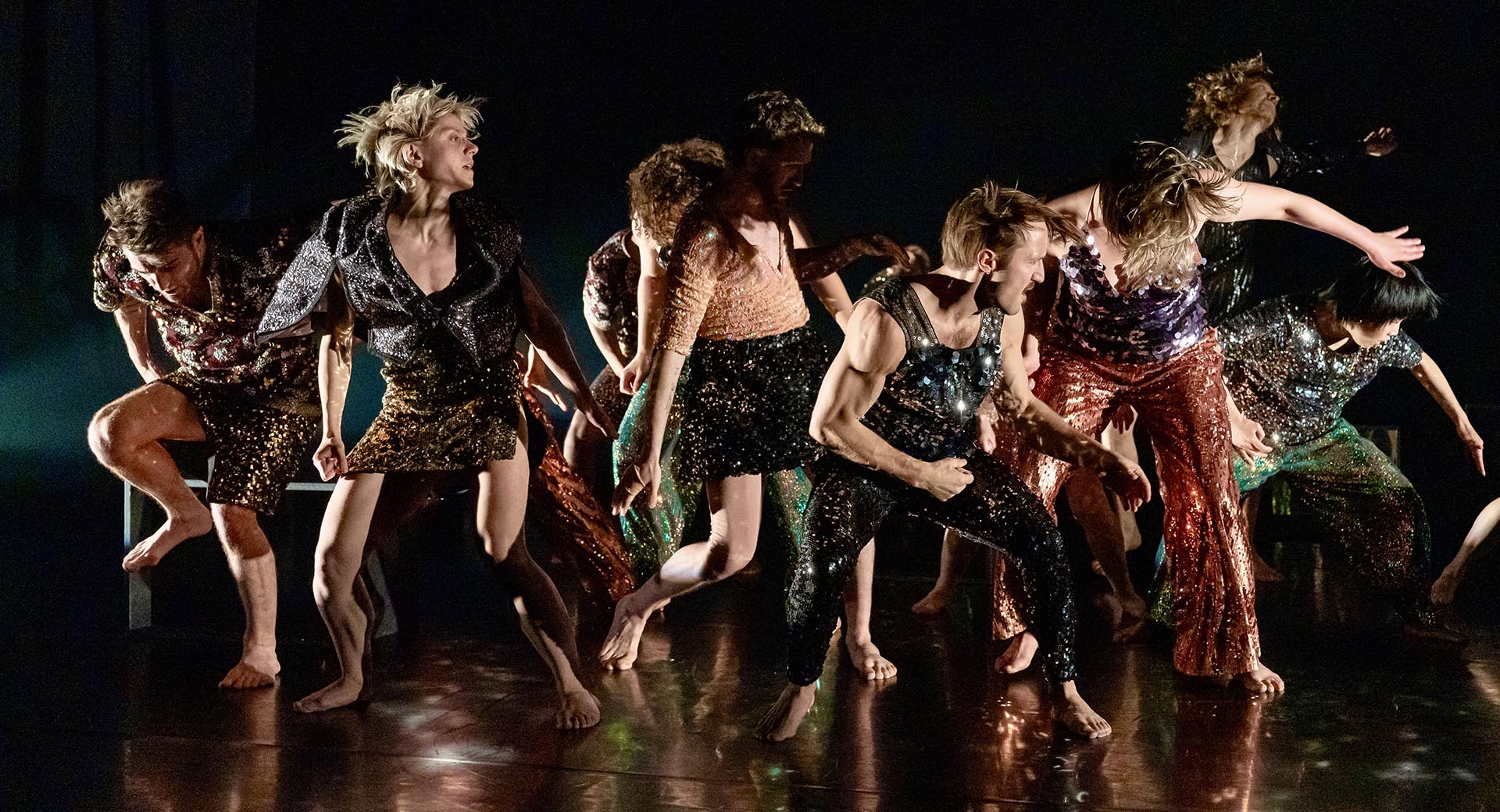

Montreal – a city of dancers and artists, in no short measure thanks to cultural policy, given how local government always invested in all forms of art. We will mention our beloved Marie Chouinard, who directed the Venice Dance Biennale for four years, Louise Lecavalier (So Blue, 2017), and Daina Ashbee, whose Unrelated, a story on the taboos of female sexuality, was presented at the Biennale at the Biennale in 2017. Montreal’s schools and choreographers know how to wed the classic and the modern while authoring pieces on very current, often very divisive, themes. Virginie Brunelle grew within this context. She graduated from Quebec University in 2008 and a year later, she formed her eponymous company to put music at the centre of the creative process. Her personal, visionary style opened the doors of the greatest European theatres for her, including the Theaterhaus in Stuttgart (Les corps avalés, 2018).
The piece Brunelle will show in Venice, Fables, premiered at the 2022 Lugano Dance Project Festival in Switzerland. It answers 2025 Venice Dance Biennale director Wayne McGregor’s theme Mythmakers with twelve performers and a pianist telling stories about women who are archetypes of freedom. A reflection on society with a sprinkle of humour. Its symbolic setting is Mont Vérité (lit. ‘truth hill’), the emblematic hilltop of early twentieth-century idealistic counter-culture that reminds one of Rudolf Laban, Isadora Duncan, Ida Hofmann, Mary Wigman, Charlotte Bara, and others.
Rigid rules for dance no more.
While modern dance was, in fact, born to counter certain codes, that doesn’t mean it is immune from other forms of pressures. Cultural markets, productions, formats imposed by institutions, and audiences’ expectations are real constraints. There’s a constant tension between a desire for artistic freedom and a need for visibility, readability, and fiscal sustainability. I still believe it is possible to keep true to one’s ideas and find a balance between sincerity, creativity, and adaptability.

Fables as an entry in the Biennale programme.
Fables explores the building of symbolical narrations within human communities. Every tableau is a myth in itself, a modern allegory of tension, struggle, and impulses that we harbour within. The show is not a story in a traditional sense, but a construction of archetypes, pieces of embodied legends. It falls naturally in the theme of Myth Makers. The final choice was McGregor’s, though, and I understand his choice: Fables is my piece that is closest to a modern mythology. Sans quoi nous crèverons is more of a socio-political critique, while Les corps avalés has a more pictorial, introspective structure. Fables echoes fairy tales, with timeless characters that are at once familiar and symbolical. They incarnate universal forces, desires, and conflicts.
Colour and pictorial power in Les corps avalés.
Visual elements emerge gradually as they converse with choreography and music. I never start out with a given image in mind, I rather let my intuition guide me in my choices of costumes and lighting. While rehearsing, colours impose their presence, textures appear, and a visual universe comes into place. My costume designer and I build this world in layers, based on what dance reveals and what costumes can offer.
In Fables the process has been a little different: I wanted costumes to be part of the creation from the very beginning, unlike anything I did before. Costumes were supposed to tell my stories as much as gestures and music do, and to become a scenic element in its own right. Costumes contain stories, symbols, and act as extensions of the body. They fully participate in the elaboration of meaning and poetry.

Contradictions in the art you make.
Human beings are essentially contradictory, which I find absolutely fascinating. I don’t make art to solve contradictions, but to show them in full light. Humour, tenderness, and absurdity coexist with pain, disillusionment, and desire. Much like in life, the tension of drama is never linear. Every moment of lightness counterpoints a darker scene, and vice versa. This dialogue of opposites highlights every feeling and allows them to resonate more deeply. To make the ultra-dramatic and the bizarre coexist means to speak of the world we live in.
War in the world.
Mont Vérité is, to me, a powerful symbol of sweet resistance, a place where we can find new lifestyles, different than the ones we know are dominated by industrialization and social hierarchy. For Fables, I took inspiration from two key elements: the quest for gender equality and a collective desire for utopia.
The show opens with a prologue of a cold, disconnected, almost mechanical society, in contrast with an epilogue of slowly emerging human warmth and newly found unity. Between these two poles are feminist fairy tales inspired by our ancestresses and by universal archetypes. These women found their emancipation in their perseverance, their humour, their strength. They carry a breath of transformation and celebrate humanity in its most resilient, most deeply vital form.
Your short movies Réminescences and Show me the exit.
I would love it if they could make it into the Biennale programme. These short movies are precious creative spaces that allow us to explore a different timeline, a different relationship with dance. We are always open to distribution opportunities, whether in festivals or in theatres. Currently, only Réminescences is available. If the Biennale included it into a parallel section or some special programme, I would be honoured.